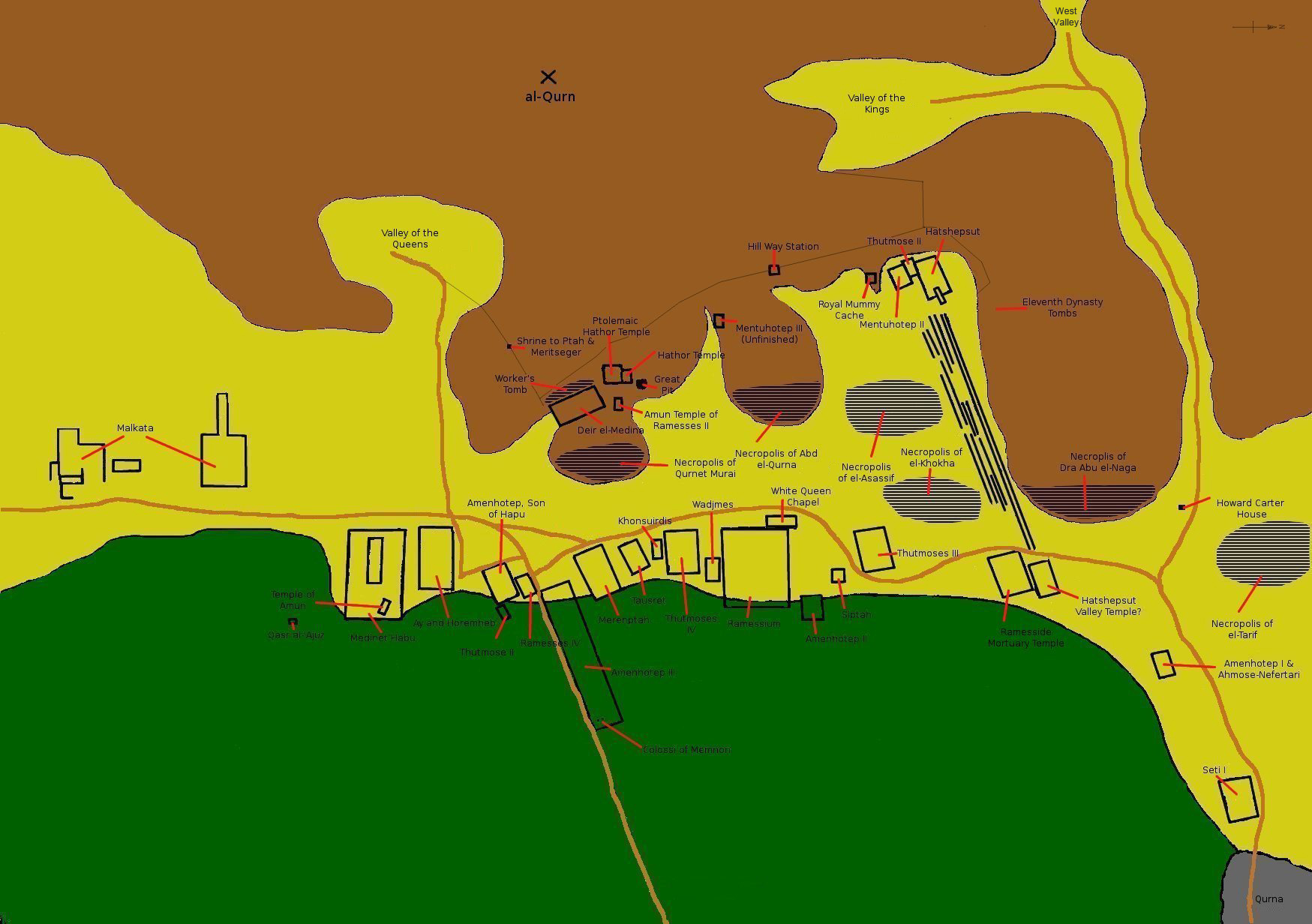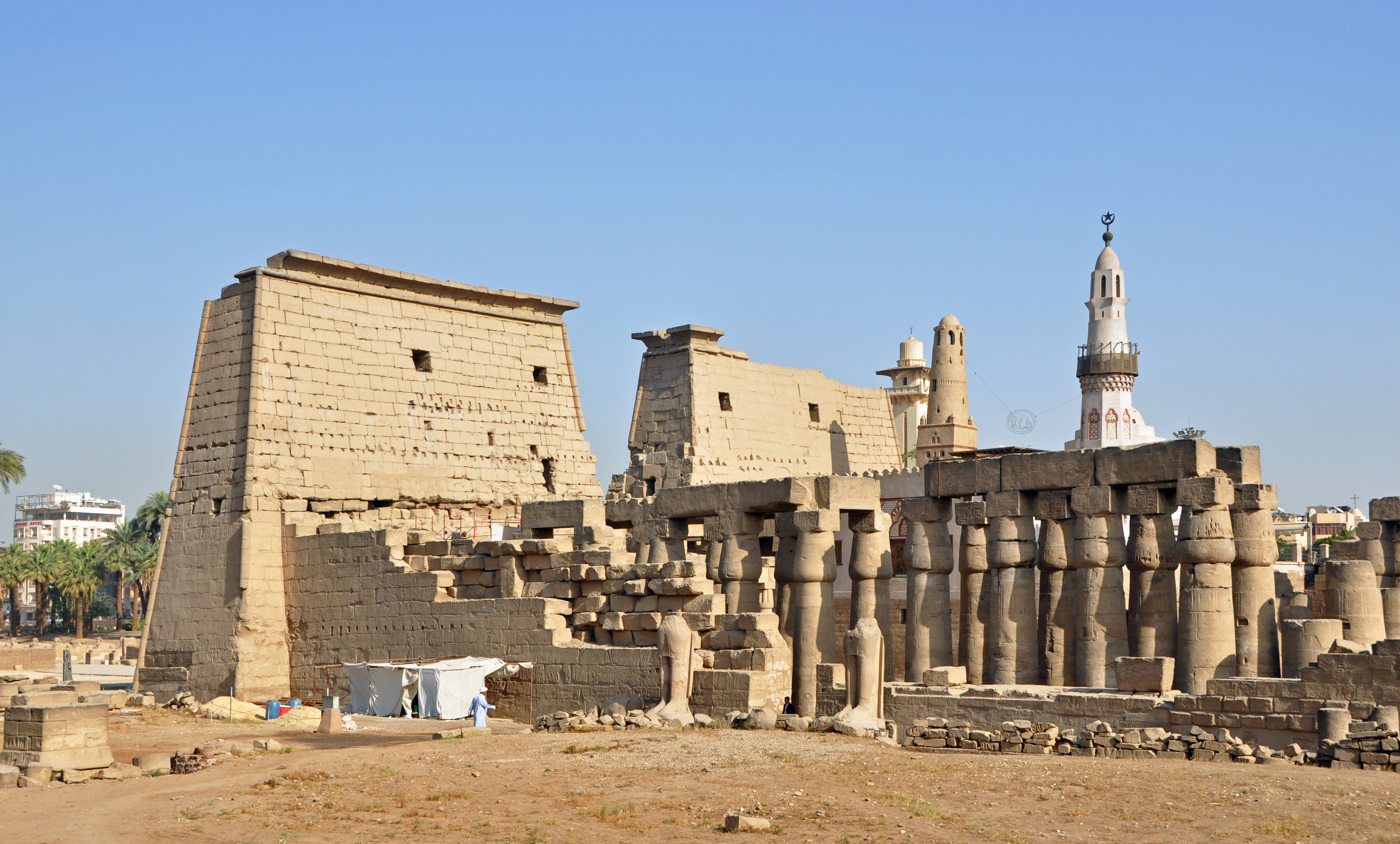|
TT226
The Theban Tomb TT226 is located in Sheikh Abd el-Qurna, part of the Theban Necropolis, on the west bank of the Nile, opposite to Luxor. It is the burial place of the ancient Egyptian Heqareshu (Hekreshu), who was an Overseer of the King's Tutors during the reign of Tuthmosis IV in the Eighteenth Dynasty.Newberry, Percy E., "The Sons of Tuthmosis IV", ''The Journal of Egyptian Archaeology'', Vol. 14, No. 1/2 (May, 1928), pp. 82–85Porter, Bertha and Moss, Rosalind, ''Topographical Bibliography of Ancient Egyptian Hieroglyphic Texts, Statues, Reliefs and Paintings'' Volume I: The Theban Necropolis, Part I. Private Tombs, Griffith Institute. 1970, p 279, In TT226 Heqareshu is depicted with four royal sons, including princes whose names have been reconstructed as Akheperre and Akheperure. Davies had suggested that Heqareshu was a tutor to the sons of Amenhotep III, but Newberry shows that these princes are sons of Tuthmosis IV. Pharaoh Amenhotep III is depicted in TT226 with hi ... [...More Info...] [...Related Items...] OR: [Wikipedia] [Google] [Baidu] |
List Of Theban Tombs
The Theban Necropolis is located on the west bank of the Nile, opposite Luxor, in Egypt. As well as the more famous royal tombs located in the Valley of the Kings and the Valley of the Queens, there are numerous other tombs, more commonly referred to as Tombs of the Nobles (Luxor), the burial places of some of the powerful courtiers and persons of the ancient city. There are at least 415 cataloged tombs, designated TT for Theban Tomb. There are other tombs whose position has been lost, or for some other reason do not conform to this classification. See for instance the List of MMA Tombs. Theban tombs tended to have clay funerary cones placed over the entrance of the tomb chapels. During the New Kingdom they were inscribed with the title and name of the tomb owner, sometimes with short prayers. Of the 400 recorded sets of cones, only about 80 come from cataloged tombs. The numbering system was first published Arthur Weigall's 1908 ''Report on the Tombs of Shêkh Abd’ el Gûr ... [...More Info...] [...Related Items...] OR: [Wikipedia] [Google] [Baidu] |
Sheikh Abd El-Qurna
The necropolis of Sheikh Abd el-Qurna ( ar, شيخ عبدالقرنة) is located on the West Bank at Thebes in Upper Egypt. It is part of the archaeological area of Deir el-Bahari, and named after the domed tomb of the local saint. This is the most frequently visited cemetery on the Theban west bank, with the largest concentration of private tombs. Tombs * TT21 User, Scribe, Steward of king Thutmose I * TT22 Wah, later usurped by Meryamun * TT23 – Tjay * TT30 Khonsmose, Amun treasury official, Ramesside * TT31 – Khonsu * TT38 Djeserkaraseneb, Scribe, Counter of grain in the granary of the divine offerings of Amun * TT41 Amenemopet called Ipy, Amun temple high steward * TT42 Amenmose, Captain of troops, Eyes of the King in the Two Lands of the Retenu * TT43 Neferrenpet, Overseer of the kitchen (stores?) of Pharaoh * TT44 Amenemhab, wab-priest in front of Amun * TT45 Djehuty, Steward of high priest of Amun Mery * TT46 Ramose, Steward of the Mansion of the Ate ... [...More Info...] [...Related Items...] OR: [Wikipedia] [Google] [Baidu] |
Theban Tombs
The Theban Necropolis is located on the west bank of the Nile, opposite Luxor, in Egypt. As well as the more famous royal tombs located in the Valley of the Kings and the Valley of the Queens, there are numerous other tombs, more commonly referred to as Tombs of the Nobles (Luxor), the burial places of some of the powerful courtiers and persons of the ancient city. There are at least 415 cataloged tombs, designated TT for Theban Tomb. There are other tombs whose position has been lost, or for some other reason do not conform to this classification. See for instance the List of MMA Tombs. Theban tombs tended to have clay funerary cones placed over the entrance of the tomb chapels. During the New Kingdom they were inscribed with the title and name of the tomb owner, sometimes with short prayers. Of the 400 recorded sets of cones, only about 80 come from cataloged tombs. The numbering system was first published Arthur Weigall's 1908 ''Report on the Tombs of Shêkh Abd’ el Gûrneh ... [...More Info...] [...Related Items...] OR: [Wikipedia] [Google] [Baidu] |
Thebes, Egypt
, image = Decorated pillars of the temple at Karnac, Thebes, Egypt. Co Wellcome V0049316.jpg , alt = , caption = Pillars of the Great Hypostyle Hall, in '' The Holy Land, Syria, Idumea, Arabia, Egypt, and Nubia'' , map_type = Egypt , map_alt = , map_size = , relief = yes , coordinates = , location = Luxor, Luxor Governorate, Egypt , region = Upper Egypt , type = Settlement , part_of = , length = , width = , area = , height = , builder = , material = , built = , abandoned = , epochs = , cultures = , dependency_of = , occupants = , event = , excavations = , archaeologists = , condition = , ownership = , management = , public_access = , website = , notes = , designation1 = WHS , designation1_offname = Ancient ... [...More Info...] [...Related Items...] OR: [Wikipedia] [Google] [Baidu] |
Theban Necropolis
The Theban Necropolis is a necropolis on the west bank of the Nile, opposite Thebes ( Luxor) in Upper Egypt. It was used for ritual burials for much of the Pharaonic period, especially during the New Kingdom. Mortuary temples * Deir el-Bahri ** Mortuary temple of Hatshepsut ** Mortuary temple of Mentuhotep II ** Mortuary temple of Thutmose III * Medinet Habu ** Mortuary temple and palace of Ramesses III ** Mortuary Temple of Ay & Horemheb * Mortuary Temple of Amenhotep III ** Colossi of Memnon * Mortuary Temple of Merneptah * Mortuary Temple of Ramesses IV * Mortuary Temple of Thutmose IV * Mortuary Temple of Thutmose III * Mortuary Temple of Twosret * Temple of Nebwenenef * Qurna ** Mortuary Temple of Seti I * Mortuary Temple of Amenhotep II * Ramesseum (Mortuary Temple of Ramesses II) Royal Necropolis * Valley of the Kings (Modern: "''Wadi el-Muluk''") * Valley of the Queens (Modern: "''Biban el-Harim''") * Royal Cache * Bab el-Gasus Necropolis * Deir el-Med ... [...More Info...] [...Related Items...] OR: [Wikipedia] [Google] [Baidu] |
Nile
The Nile, , Bohairic , lg, Kiira , Nobiin language, Nobiin: Áman Dawū is a major north-flowing river in northeastern Africa. It flows into the Mediterranean Sea. The Nile is the longest river in Africa and has historically been considered the List of rivers by length, longest river in the world, though this has been contested by research suggesting that the Amazon River is slightly longer.Amazon Longer Than Nile River, Scientists Say Of the world's major rivers, the Nile is one of the smallest, as measured by annual flow in cubic metres of water. About long, its drainage basin covers eleven countries: the Democratic Republic of the Congo, Tanzania, Burundi, Rwanda, Uganda, Kenya, Ethiopia, Erit ... [...More Info...] [...Related Items...] OR: [Wikipedia] [Google] [Baidu] |
Luxor
Luxor ( ar, الأقصر, al-ʾuqṣur, lit=the palaces) is a modern city in Upper (southern) Egypt which includes the site of the Ancient Egyptian city of ''Thebes''. Luxor has frequently been characterized as the "world's greatest open-air museum", as the ruins of the Egyptian temple complexes at Karnak and Luxor stand within the modern city. Immediately opposite, across the River Nile, lie the monuments, temples and tombs of the west bank Theban Necropolis, which includes the Valley of the Kings and Valley of the Queens. Thousands of tourists from all around the world arrive annually to visit Luxor's monuments, contributing greatly to the economy of the modern city. The population of Luxor is 422,407 (2021), with an area of approximately . It is the capital of Luxor Governorate. It is among the oldest inhabited cities in the world. Etymology The name ''Luxor'' ( ar, الأقصر, al-ʾuqṣur, lit=the palace, pronounced , , Upper Egyptian: ) derives from the Ara ... [...More Info...] [...Related Items...] OR: [Wikipedia] [Google] [Baidu] |
Tuthmosis IV
Thutmose IV (sometimes read as Thutmosis or Tuthmosis IV, Thothmes in older history works in Latinized Greek; egy, ḏḥwti.msi(.w) "Thoth is born") was the 8th Pharaoh of the 18th Dynasty of Egypt, who ruled in approximately the 14th century BC. His prenomen or royal name, Menkheperure, means "Established in forms is Re." He was the son of Amenhotep II and Tiaa. Life Thutmose IV was born to Amenhotep II and Tiaa, but was not actually the crown prince and Amenhotep II's chosen successor to the throne. Some scholars speculate that Thutmose ousted his older brother in order to usurp power and then commissioned the Dream Stele in order to justify his unexpected kingship. Thutmose's most celebrated accomplishment was the restoration of the Great Sphinx of Giza and subsequent commission of the Dream Stele. According to Thutmose's account on the Dream Stele, while the young prince was out on a hunting trip, he stopped to rest under the head of the Sphinx, which was buried up to th ... [...More Info...] [...Related Items...] OR: [Wikipedia] [Google] [Baidu] |
Amenhotep III
Amenhotep III ( egy, jmn-ḥtp(.w), ''Amānəḥūtpū'' , "Amun is Satisfied"; Hellenization, Hellenized as Amenophis III), also known as Amenhotep the Magnificent or Amenhotep the Great, was the ninth pharaoh of the Eighteenth dynasty of Egypt, Eighteenth Dynasty. According to different authors, he ruled Egypt from June 1386 to 1349 BC, or from June 1388 BC to December 1351 BC/1350 BC, after his father Thutmose IV died. Amenhotep was Thutmose's son by a minor wife, Mutemwiya. His reign was a period of unprecedented prosperity and splendour, when Egypt reached the peak of its artistic and international power. When he died in the 38th or 39th year of his reign he was succeeded by his son Amenhotep IV, who later changed his name to Akhenaten. Family and early life Amenhotep was the son of Thutmose IV and his minor wife Mutemwiya. He was born probably around 1401 BC. Later in his life, Amenhotep commissioned the depiction of his divine birth to be displayed at Luxor Temple. Amenh ... [...More Info...] [...Related Items...] OR: [Wikipedia] [Google] [Baidu] |
Pharaoh
Pharaoh (, ; Egyptian: '' pr ꜥꜣ''; cop, , Pǝrro; Biblical Hebrew: ''Parʿō'') is the vernacular term often used by modern authors for the kings of ancient Egypt who ruled as monarchs from the First Dynasty (c. 3150 BC) until the annexation of Egypt by the Roman Empire in 30 BC. However, regardless of gender, "king" was the term used most frequently by the ancient Egyptians for their monarchs through the middle of the Eighteenth Dynasty during the New Kingdom. The term "pharaoh" was not used contemporaneously for a ruler until a possible reference to Merneptah, c. 1210 BC during the Nineteenth Dynasty, nor consistently used until the decline and instability that began with the Twenty-Fifth Dynasty. In the early dynasties, ancient Egyptian kings had as many as three titles: the Horus, the Sedge and Bee ( ''nswt-bjtj''), and the Two Ladies or Nebty ( ''nbtj'') name. The Golden Horus and the nomen and prenomen titles were added later. In Egyptian society, ... [...More Info...] [...Related Items...] OR: [Wikipedia] [Google] [Baidu] |
.jpg)






